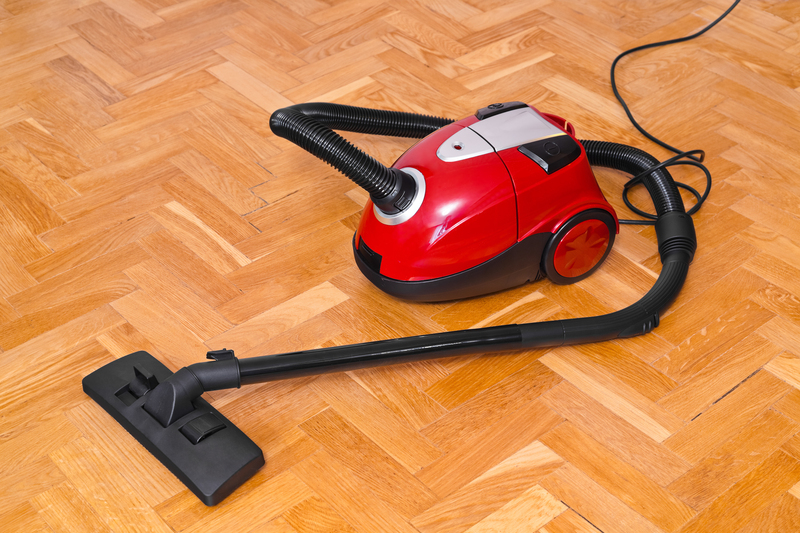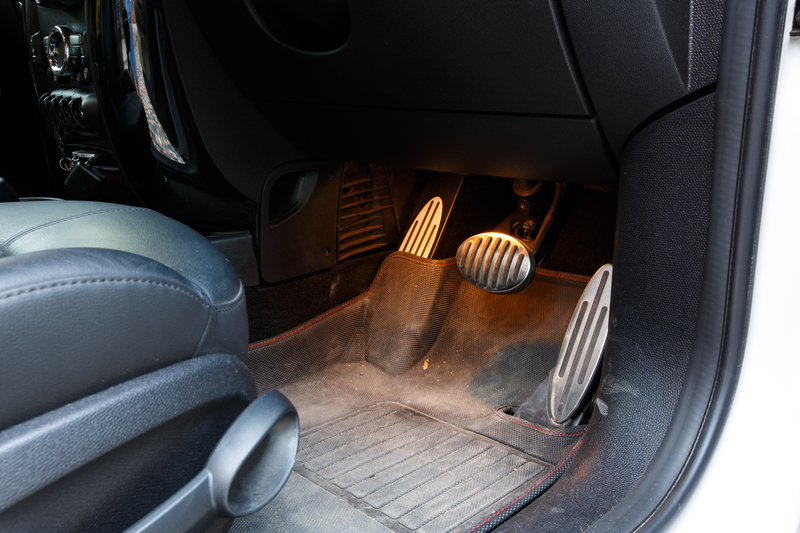Mastering the Art of a Dust-Free, Allergen-Reduced Home
Posted on 08/09/2025
Mastering the Art of a Dust-Free, Allergen-Reduced Home
Achieving a dust-free, allergen-reduced home isn't just about aesthetics--it's crucial for health, comfort, and peace of mind. Allergens and dust can aggravate respiratory issues, cause sneezing fits, and diminish overall home wellness. Mastering this art requires a deep understanding of where dust and allergens originate, ongoing prevention strategies, and a proactive attitude towards cleanliness. In this comprehensive guide, we'll reveal proven techniques, modern solutions, and sustainable habits to ensure your home becomes a truly allergen-reduced sanctuary.

Understanding the Sources: What Causes Dust & Allergens?
Before embarking on your journey to a dust-free environment, let's first uncover where dust and allergens come from within the home:
- Textiles: Carpets, curtains, upholstery, and bedding regularly shed fibers and trap dust, pollen, and pet dander.
- Human and animal skin: Both people and pets continuously shed skin flakes (also called dander), which contribute significantly to dust buildup.
- Outdoor elements: Pollen, dirt, and spores often enter through open doors, windows, or on shoes, exacerbating the allergen load inside.
- Insect and mite particles: Microscopic debris from dust mites and cockroaches can linger in household dust and trigger allergies.
- Household products: Some cleaning products and home improvement materials contribute to airborne particulates and chemical allergens.
By identifying these culprits, you have already begun the process of mastering a dust-free home!
Implementing an Effective Cleaning Routine
A thorough and regular cleaning routine is pivotal to reduce dust and allergens significantly. Here are step-by-step strategies for exceptional results:
1. Adopt Smart Dusting Habits
- Always dust from top to bottom--start with ceiling fans, shelves, and work downward to avoid just moving dust around.
- Use microfiber cloths and electrostatic dusters--they trap particles, while feather dusters simply redistribute the grime.
- Dampen your cloth slightly; dry dusting can just push dust into the air instead of picking it up.
2. Invest in HEPA-Filtered Vacuums
- HEPA (High-Efficiency Particulate Air) filters capture microscopic particles--including pollen, pet dander, and dust mites--far better than standard filters.
- Vacuum carpets, rugs, and upholstery at least twice a week--more if you have pets or allergies.
- Don't forget frequently overlooked areas: beneath furniture, cushions, mattresses, and baseboards.
3. Wet Mop Hard Floors
- Sweeping can kick dust back into the air; instead, use a damp mop for tile, wood, or vinyl flooring to completely remove dust and allergens.
- Clean high-traffic areas more frequently, as they collect and spread particulates more quickly.
4. Wash Bedding and Fabrics Regularly
- Launder bed sheets, pillowcases, and blankets in hot water (at least 130?F/54?C) weekly to kill dust mites and reduce allergens.
- Don't forget to wash curtains and fabric shower curtains monthly, and consider hypoallergenic mattress and pillow covers.
5. Declutter and Organize
- Clutter traps dust and makes cleaning difficult. Adopt a minimalist mindset for easier maintenance of a dust-free home.
- Store books, toys, and knick-knacks in closed cabinets or containers.
- Rotate seasonal items in and out of storage to prevent unnecessary dust collection.
Allergen Reduction: Going Beyond Basic Cleaning
While cleaning is essential, a truly allergen-reduced home involves additional preventative measures. Incorporate these methods to dramatically improve your indoor environment:
1. Enhance Ventilation and Air Filtration
- Install a high-quality HEPA air purifier in bedrooms and living areas to trap allergens and dust particles as they circulate through the air.
- Change HVAC and furnace filters every 2-3 months, or as recommended by your system's manufacturer.
- Open windows periodically (when outdoor pollen counts are low) to boost air exchange and decrease stuffiness.
2. Control Humidity
- Maintain indoor humidity between 30% and 50% to inhibit dust mites and mold growth--both major triggers for allergies.
Use a dehumidifier in damp areas like basements and bathrooms as necessary. - Fix leaks quickly to prevent dampness where allergens thrive.
3. Minimize Pet Allergens
- Bathe and brush pets regularly to reduce dander shedding, ideally outdoors or in well-ventilated areas.
- Keep pets off beds and upholstered furniture; designate specific areas for pet relaxation.
- Wash pet bedding, toys, and collars on a bi-weekly basis.
4. Choose Hypoallergenic Materials
- Switch to hard flooring (wood, tile, or vinyl) if possible; carpets and rugs are significant dust reservoirs.
- Opt for non-fabric blinds or easily washable window treatments.
- Use simple furniture and decor with minimal trapping surfaces; reduce the presence of heavy drapery, ornate covers, or textile wall hangings.
5. Regularly Maintain Hidden or Overlooked Zones
- Clean behind large appliances (fridges, washing machines, ovens) at least quarterly.
- Wipe down baseboards, wall trims, and ceiling vents frequently--they accumulate large amounts of settled dust.
- Empty and clean vacuum cleaners and mop buckets after every use to avoid reintroducing old dust into your home.
Seasonal Strategies for a Dust and Allergen Free Home
A dust-free, allergen-reduced home environment requires special attention during certain times of the year, especially spring and autumn when pollen and particulates peak. Here's how to adapt your strategy:
Spring Tips
- Monitor local pollen forecasts and keep windows and doors closed during high alert days.
- Change out-of-season bedding, drapes, and clothing promptly, and store them in airtight containers.
- Deep clean windows, screens, and window sills to remove pollen accumulation before it spreads indoors.
Autumn Advice
- Regularly clear leaves and debris near entryways--they're often laden with mold spores and dust.
- Prepare heating systems for use by thoroughly cleaning vents, filters, and ducts to prevent dust dispersion throughout the house.
- Increase vacuuming frequency, as more time is spent indoors during cooler weather, resulting in more dust and dander buildup.
Creating a Personal Dust-Free, Allergen-Reduced Sanctuary
While a whole-home approach is the gold standard, certain areas deserve special focus--particularly bedrooms, as we spend a large portion of our lives there.
Bedroom Allergen Reduction Checklist
- Invest in hypoallergenic mattress and pillow covers to block dust mites and allergen penetration.
- Keep closets organized and avoid storing extra clothing or textiles on open surfaces.
- Remove or minimize plush toys, as they trap dust and allergens.
- Use washable curtains or blinds and clean them monthly.
- Run a HEPA air purifier continuously, especially during sleep hours.
Modern Technology Meets Tradition: Tools for a Cleaner Home
Advancements in home technology make a dust-free, allergen-reduced household easier to achieve than ever before. Consider incorporating these modern solutions:
- Robot vacuum cleaners with HEPA filters for automated floor care, especially helpful for busy schedules or large spaces.
- Electrostatic air filters and smart air purifiers which monitor and adjust air quality in real time.
- UV sterilizers for bedding and soft furnishings to kill dust mites and bacteria.
- Intelligent humidifiers and dehumidifiers that automatically maintain optimal moisture levels.
While technology offers significant advantages, traditional cleaning approaches remain indispensable for deep, long-lasting cleanliness--so combine both for optimal results.
Common Myths About Achieving a Dust-Free Environment
Let's debunk a few misconceptions when it comes to maintaining a dust and allergen-reduced home:
- Myth: Closing windows always prevents dust.
Truth: While open windows can allow outdoor dust and pollen inside, proper ventilation and filtered airflow are vital to reduce indoor air stagnation and allergen buildup. - Myth: Only allergy sufferers need worry about dust.
Truth: Dust impacts all residents, contributing to poor air quality and the spread of bacteria and viruses. - Myth: Scented candles and sprays "clean" the air.
Truth: Many air fresheners only mask odors while introducing additional chemicals and particulates.

Long-Term Habits: Lifestyle Changes for a Dust-Free, Allergen-Reduced Living Space
Success in mastering a dust and allergen minimized home lies in creating and sustaining healthy daily routines. Here's how you can integrate these strategies into your life:
- Establish a weekly cleaning schedule and delegate tasks among household members.
- Adopt a 'shoes-off' policy at home to reduce the amount of outdoor debris tracked indoors.
- Groom pets outdoors and keep their fur trimmed, especially if they are prone to shedding.
- Educate family members about allergy-friendly practices; involve children in dust-busting routines suitable for their age.
- Periodically check for mold and address any leaks or condensations immediately.
Conclusion: The Rewards of a Dust-Free, Allergen-Reduced Home
Upholding a dust-free, allergen-reduced lifestyle is a continuous journey, but one that pays remarkable dividends for your health, comfort, and the longevity of your home's interior. By blending diligent cleaning, smart prevention, technological upgrades, and year-round strategies, you become a master of your environment.
Whether you're combating seasonal allergies, reactive airways, or simply seeking a fresher living space, the art of maintaining a clean, allergen-minimized home is within your grasp. Begin today, and breathe easier tomorrow!





